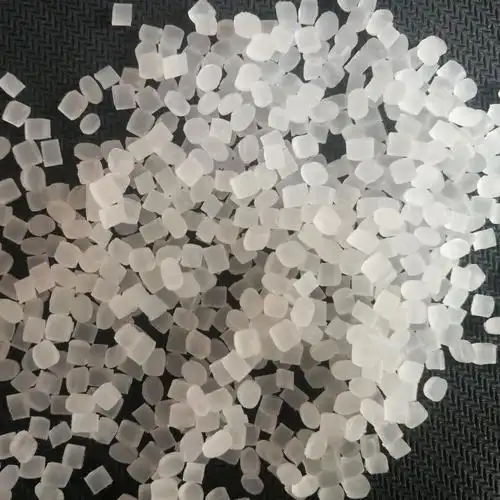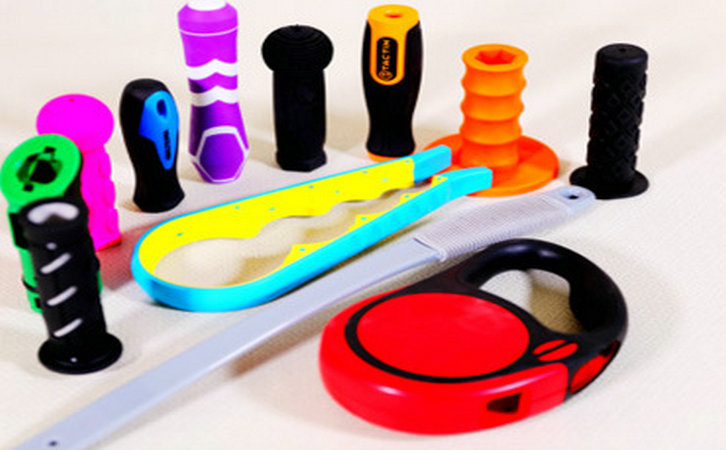As someone deeply entrenched in the TPE (Thermoplastic Elastomer) processing industry for years, I’ve encountered my fair share of challenges and questions from both newcomers and seasoned professionals. One recurring query that often pops up is: Does the appearance of filaments or “stringing” in TPE cast film suggest that the humidity levels are too high during production? This is a pertinent question, as the quality and integrity of TPE films are crucial for their performance in various applications, ranging from packaging to automotive components. In this article, I’ll draw from my extensive experience to explore this topic in depth, providing insights and practical solutions.

Understanding TPE Cast Film Production
Before delving into the specifics of humidity and filament formation, it’s essential to have a basic understanding of how TPE cast film is produced. TPE cast film is manufactured through a process called casting, where molten TPE material is extruded through a flat die onto a cooled roll or belt. This process allows for the production of thin, uniform films with excellent mechanical properties and surface finish.
Key Factors Influencing TPE Cast Film Quality
Several factors play a critical role in determining the quality of TPE cast film:
Material Selection: The choice of TPE grade and formulation significantly impacts the film’s properties, including flexibility, strength, and resistance to environmental factors.
Extrusion Parameters: Temperature, pressure, and speed during extrusion must be carefully controlled to ensure consistent melt flow and film formation.
Die Design: The design of the extrusion die affects the film’s thickness uniformity and surface quality.
Cooling System: Efficient cooling is essential to solidify the molten TPE quickly and prevent deformation or sticking.
Environmental Conditions: Temperature and humidity in the production environment can influence the material’s behavior and the final film quality.
The Role of Humidity in TPE Processing
Humidity, or the amount of water vapor present in the air, is a critical environmental factor that can affect TPE processing in several ways. While TPE materials are generally less sensitive to humidity compared to hygroscopic polymers like nylon or polyester, excessive moisture can still lead to issues during production.
How Does Humidity Affect TPE?
Moisture Absorption: Although TPEs have lower moisture absorption rates than some other polymers, they can still absorb a small amount of moisture from the air. This absorbed moisture can act as a plasticizer, altering the material’s viscosity and flow characteristics.
Hydrolytic Degradation: In extreme cases, prolonged exposure to high humidity can lead to hydrolytic degradation of the TPE material, breaking down the polymer chains and reducing the material’s mechanical properties.
Surface Defects: Moisture on the surface of the TPE pellets or in the extrusion equipment can cause surface defects like bubbles, voids, or streaks in the final film.

Filaments in TPE Cast Film: Causes and Solutions
Now, let’s address the main question: does the presence of filaments in TPE cast film indicate excessive humidity? While humidity can contribute to certain surface defects, filaments or stringing are more commonly associated with other factors in the extrusion process.
Common Causes of Filaments in TPE Cast Film
Melt Fracture:
Explanation: Melt fracture occurs when the molten TPE experiences excessive shear stress as it passes through the die, causing the material to break up into filaments or rough surfaces.
Symptoms: Filaments appear as fine, hair-like strands on the film surface, often accompanied by a rough or uneven texture.
Solutions: Adjust the extrusion temperature to reduce viscosity, optimize the die design to minimize shear stress, and ensure proper die cleaning to prevent blockages.
Die Lines:
Explanation: Die lines are caused by imperfections or damage to the die surface, leading to localized flow disturbances and the formation of filaments.
Symptoms: Filaments appear as continuous lines or streaks running parallel to the extrusion direction, often with a raised or depressed texture.
Solutions: Inspect and polish the die surface regularly to remove any imperfections, and replace damaged dies as needed.
Insufficient Cooling:
Explanation: If the cooling system is not efficient enough, the molten TPE may not solidify quickly enough, leading to sagging or stretching of the film and the formation of filaments.
Symptoms: Filaments appear as drooping or wavy lines on the film surface, often accompanied by a loss of thickness uniformity.
Solutions: Optimize the cooling system by adjusting the temperature and flow rate of the cooling medium, and ensure proper contact between the film and the cooling surface.
Excessive Humidity (Indirect Effects):
Explanation: While humidity itself may not directly cause filaments, it can contribute to other issues like moisture absorption, which can alter the material’s flow properties and indirectly lead to filament formation.
Symptoms: In addition to filaments, you may notice other surface defects like bubbles or voids, indicating moisture-related issues.
Solutions: Control the humidity levels in the production environment using dehumidifiers or air conditioning systems, and store TPE pellets in a dry, climate-controlled area to prevent moisture absorption.

Comparing Filaments Caused by Humidity vs. Other Factors
To help you better understand the differences, here’s a table comparing filaments caused by humidity-related issues versus other common factors:
| Factor | Appearance of Filaments | Associated Symptoms | Solutions |
|---|---|---|---|
| Excessive Humidity (Indirect) | Fine, scattered filaments | Bubbles, voids, rough surface | Control humidity, dry pellets |
| Melt Fracture | Fine, hair-like filaments | Rough, uneven texture | Adjust temperature, optimize die |
| Die Lines | Continuous lines/streaks | Raised/depressed texture | Inspect/polish die, replace if damaged |
| Insufficient Cooling | Drooping/wavy filaments | Loss of thickness uniformity | Optimize cooling system |
Practical Tips for Preventing Filaments in TPE Cast Film
Based on my experience, here are some practical tips to help you prevent filaments and other surface defects in TPE cast film:
Optimize Extrusion Parameters:
Carefully control the extrusion temperature, pressure, and speed to ensure consistent melt flow and film formation.
Conduct regular trials and adjustments to find the optimal parameters for your specific TPE grade and application.
Maintain Die Cleanliness and Integrity:
Clean the die regularly to remove any residue or buildup that can cause flow disturbances.
Inspect the die surface for imperfections or damage and polish or replace as needed.
Ensure Efficient Cooling:
Optimize the cooling system to ensure rapid and uniform solidification of the molten TPE.
Monitor the cooling temperature and flow rate regularly and make adjustments as necessary.
Control Environmental Conditions:
Maintain a stable temperature and humidity level in the production environment to minimize the impact of environmental factors on the TPE material.
Use dehumidifiers or air conditioning systems to control humidity, especially in humid climates or during rainy seasons.
Store TPE Pellets Properly:
Store TPE pellets in a dry, climate-controlled area to prevent moisture absorption.
Use sealed containers or bags to protect the pellets from humidity and contaminants.
Conduct Regular Quality Checks:
Implement a robust quality control system to monitor the film’s appearance, thickness, and mechanical properties regularly.
Use visual inspection, thickness gauges, and tensile testing equipment to detect and address any issues early on.
Conclusion: Addressing Filaments in TPE Cast Film
In conclusion, while excessive humidity can contribute to certain issues in TPE processing, the presence of filaments in TPE cast film is more commonly associated with factors like melt fracture, die lines, and insufficient cooling. By understanding these causes and implementing practical solutions, you can significantly improve the quality and consistency of your TPE cast film.
Remember, the key to successful TPE processing lies in careful control of all production parameters, from material selection and extrusion settings to environmental conditions and quality control. By staying vigilant and proactive, you can overcome challenges like filament formation and produce high-quality TPE films that meet the demands of your customers and applications.

Related Q&A
Q: Can I use a moisture analyzer to determine if my TPE pellets are too moist before processing?
A: Yes, a moisture analyzer is a valuable tool for measuring the moisture content of TPE pellets before processing. By ensuring that the moisture content is within the recommended range for your specific TPE grade, you can minimize the risk of moisture-related issues like bubbles or voids in the final film.
Q: How often should I clean and inspect my extrusion die?
A: The frequency of die cleaning and inspection depends on several factors, including the production volume, the type of TPE material being processed, and the cleanliness of the production environment. As a general guideline, it’s a good idea to clean and inspect the die at least once per shift or whenever you notice a decline in film quality.
Q: What are some signs that my cooling system needs optimization?
A: Signs that your cooling system may need optimization include uneven film thickness, sagging or stretching of the film, and the presence of filaments or other surface defects. If you notice any of these issues, it’s worth investigating your cooling system to ensure that it’s providing efficient and uniform cooling.
Q: Can I use recycled TPE material for cast film production?
A: Yes, recycled TPE material can be used for cast film production, but it’s important to ensure that the recycled material meets certain quality standards. Recycled TPE may have different flow properties, moisture content, and contaminant levels compared to virgin material, so it’s essential to conduct thorough testing and quality control to ensure consistent film quality.
Q: What are some emerging trends or technologies in TPE cast film production?
A: Some emerging trends in TPE cast film production include the development of bio-based and sustainable TPE materials, the use of advanced extrusion technologies like micro-layer co-extrusion, and the integration of smart sensors and automation for real-time monitoring and control of the production process. These innovations are driving improvements in film quality, performance, and sustainability.





